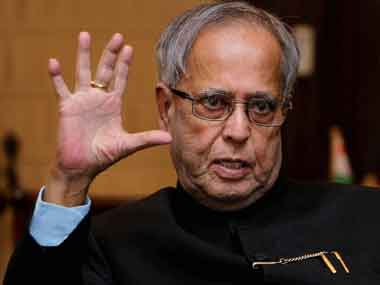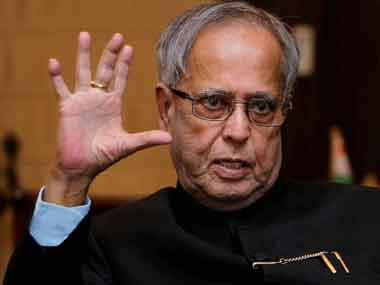This is a lose-lose year for the UPA - and its finance minister. No matter what the finance minister does, he is going to miss all his targets and slow down growth and boost inflation.
Pranab Mukherjee knows this, and this is why he has chosen to mug Vodafone even after it won a verdict in its favour from the Supreme Court in January. In fact, so crass is his chase for money this year that he has not only proposed retrospective changes in the law to nullify the Vodafone verdict, but also inserted a clause to make sure that even if the government loses again, it does not have to return the money already paid by Vodafone pending the judgment. (Read Menaka Doshi’s eye-opening analysis here ).
Mukherjee’s eagerness to collect his Vodafone dues, or at least keep what it has already collected in advance, can be understood only in the context of the miserable state of his finances, and the weak prospects ahead of the economy this year.
[caption id=“attachment_248844” align=“alignleft” width=“380” caption=“This is a lose-lose year for the UPA - and its finance minister. PTI”]
 [/caption]
[/caption]
The truth is the 7.6 percent growth target pencilled in by the finance minister is simply not going to happen - whether he achieves all his targets on revenues or expenses or not.
Let’s start with one number: the fiscal deficit of Rs 5,13,590 crore is 5.1 percent of GDP, assuming the GDP at current prices grows to Rs 10,159,884 crore. The GDP will surely get there, not least because price increases will inflate the number.
However, this is the main problem: at current crude oil prices, the total losses of the oil marketing companies will be around Rs 2,13,000 crore when Mukherjee has provided only Rs 40,000 crore for fuel subsidies, says a Business Standard report.
If the government has to make good Rs 2,13,000 crore, and only Rs 40,000 crore has been provided for in the budget, that leaves a gap of Rs 1,73,000 crore. And we are not even talking about other subsidies like fertiliser and food - where too the provisions look inadequate.
The Rs 1,73,000 crore deficit figure needs to be added to the official fiscal deficit of Rs 5,13,590 crore and what we get is the stupendous figure of 6.7 percent of GDP. The fiscal deficit figure of 5.1 percent is clearly a piece of fiction. Such real fiscal deficit - 6.7 percent - cannot but result in more inflation and slower growth.
Slower growth means less revenues - which again means a higher fiscal deficit, and higher inflation.
But a few caveats are in order.
[caption id=“attachment_248852” align=“alignright” width=“380” caption=“However you look at it - at the higher oil subsidy number or the lower one - the fiscal number put out by the finance minister is a load of bull. Reuters”]
 [/caption]
[/caption]
The first caveat is that the actual fiscal deficit figure will be lower since ONGC, Oil India and Gail will be forced to fork out 38 percent of this Rs 2,13,000 crore subsidy bill. If we take around Rs 80,000 crore as their share of subsidy payments to the oil marketing companies, and Rs 40,000 crore is already provided for, it means the balance of Rs 93,000 crore has to be raised either by price increases or be added back to the fiscal deficit figure shown in the budget.
If we do the latter, it takes the fiscal deficit figure right back to 5.97 percent - even higher than what Mukherjee reported on 16 March for this year (5.9 percent in 2011-12), despite forcing through a flawed ONGC share sale to drum up his revenue numbers.
However you look at it - at the higher oil subsidy number or the lower one - the fiscal number put out by the finance minister is a load of bull.
Plus, the point is this: even assuming the number is lower because ONGC picks up a big part of the tab, ethically the fiscal deficit is the difference between the government’s expenditure (and payables) minus its revenues. Even the subsidies paid by ONGC are really a part of the fiscal deficit since the government owns two-thirds of ONGC. Just because you force someone else to pay your bill, you do not become fiscally prudent.
The second caveat is about assumptions: what if global oil prices fall? In this case Mukherjee’s subsidies may be lower, and he might well achieve his numbers.
This cannot be ruled out, but will he? Ask yourself: if the US is reviving, and the worst is over for Europe, will oil prices fall or stabilise or rise?
In any case, if the US dollar strengthens due the economic recovery, will oil cost more in rupee terms or less for us? Given that we do not have endless foreign exchange reserves (it’s now around $294 billion, and a lot of it is really external debt), the Reserve Bank does not have the wherewithal to defend the rupee’s value. Rs 48-52 to the dollar is a safe assumption for the year, with the rider that it could get worse if oil prices harden.
So, taking these two caveats into account - the ONGC will pay a lot of the subsidies, and the possibility that oil prices may fall - what we are still left with is the possibility that diesel and cooking gas prices may be raised, assuming some degree of political consensus is achieved.
A sharp rise in fuel prices will be deflationary - it will slow growth and push up short-term inflation. The additional cess on ONGC oil will push up refinery costs - increasing the possibility of higher subsidies.
If prices are not raised, we are still up against something equally bad or worse: slowing growth this year due to higher taxes (over Rs 41,000 crore of new taxes have to be absorbed this year). And remember, we haven’t even talked about fertiliser prices and food subsidies.
The choice for this year is clear: slowing growth and inflation due to higher oil prices or higher fiscal deficits, or both.
But consider the choice ahead for next year - the last budget before 2014 elections.
Unlike this budget, Sonia Gandhi is not going to accept cuts in social spending schemes like NREGA or Food Security.
Next year is thus going to be a killer in terms of spending and fiscal profligacy. One can also be sure that in the run-up to the general elections, there will be a huge increase in minimum support prices for foodgrain - which is what happened in 2008.
Slow growth and inflation this year will be followed by excess spending next year.
Whichever way we look at it, the economy is in a lose-lose situation. This means Pranab Mukherjee will be go down in history as someone who left the economy in ruins despite his best efforts.
He may have made heroic efforts to keep the UPA in power for a while longer in the face of trouble with allies (Trinamool, DMK, etc), but he will not ultimately be able to rescue the UPA’s fortunes.
The UPA is in a lose-lose situation, Pranab-da or no Pranab-da.
)